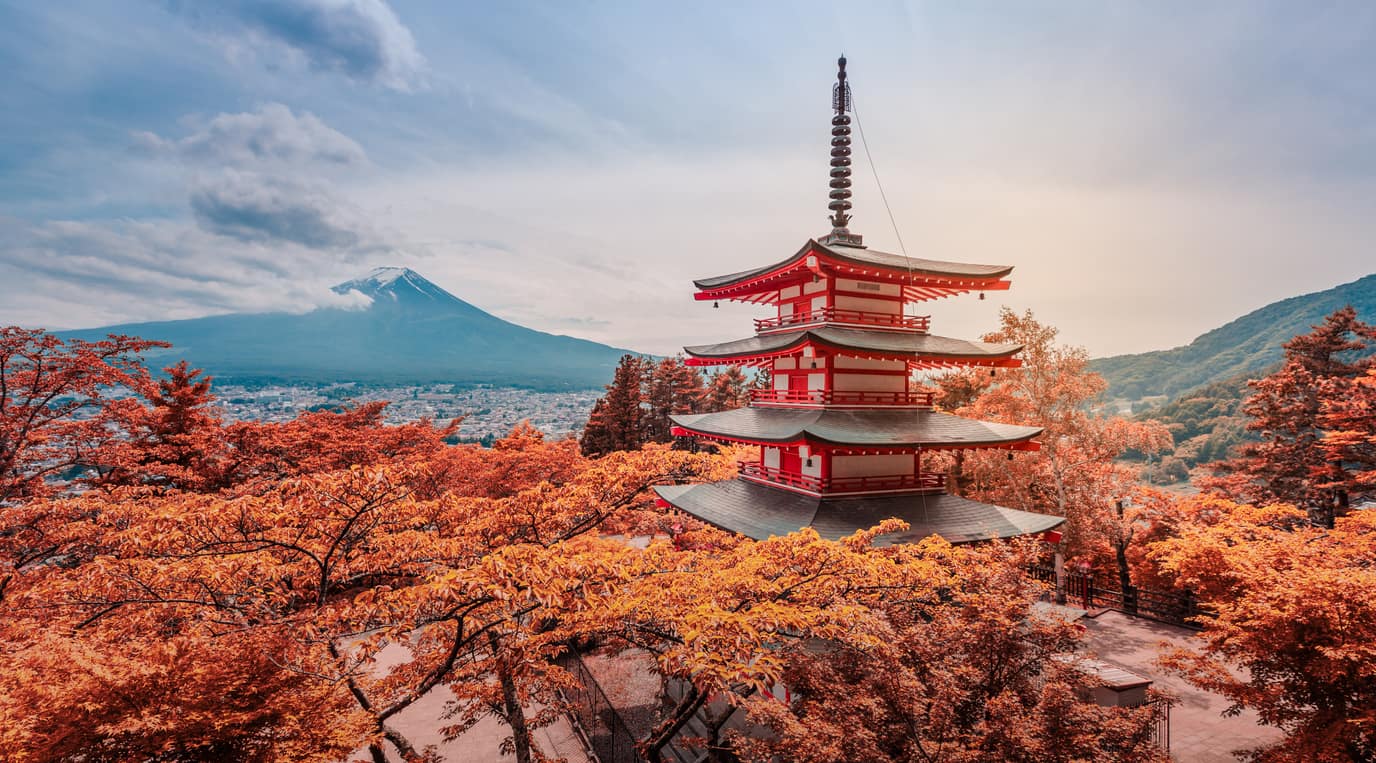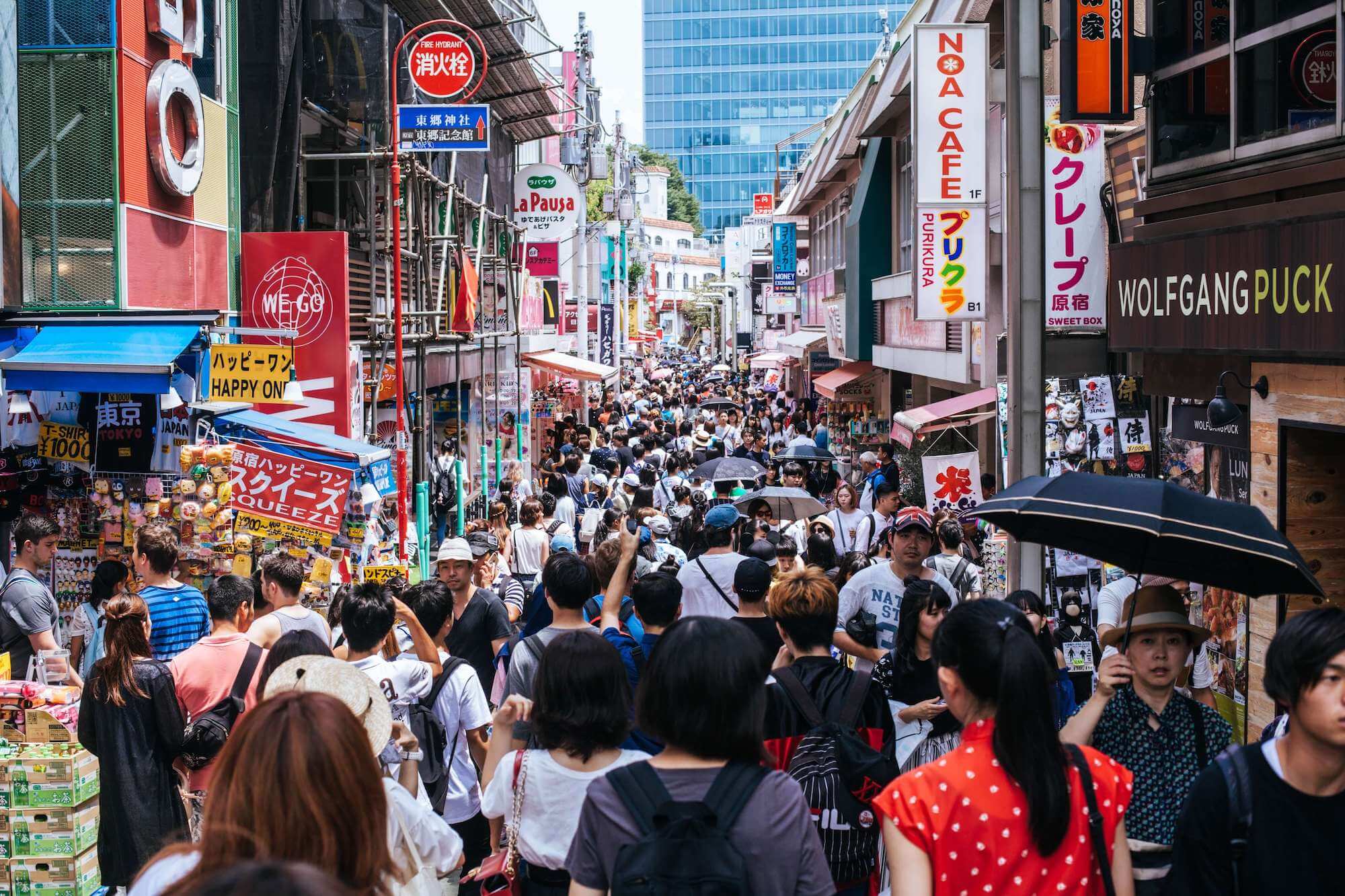Japan prides itself on all four magnificent seasons, but autumn is its most aesthetic time of year with many parts of the archipelago bursting with koyo (warm red and yellow foliage) as well as momiji (exploding red foliage). Thus, around this time of year, pilgrims far and wide make the trek around the islands for the annual mojimigari, or “red-leaf hunt”. Not only does this journey reward travelers with beloved regal foliage, but also special local dishes that correspond to the season.
While a majority of visitors are more likely to hang around Tokyo and conveniently experience its impressive maple trees, here are some cities outside of the capital that are definitely worth venturing outside for.
Daisetsuzan, Hokkaido
Located smack in the center of Japan’s northernmost (and least populated) island, Daisetsuzan is the nation’s largest national park. Due to the surrounding majestic mountain, it is often called the “rooftop of Hokkaido” and has earned the sterling reputation of being the place to experience not just the first winter snows, but also the first rich colors of autumn.


The land area of Daisetsuzan is an astounding 2,268 km2, which is better than Tokyo, New York or London. Within its impressive borders lies Hokkaido’s biggest mountain, Mt Asahidake, known as cinomisir in the Ainu tongue, which means “a mountain where we pray”. Should you visit between the months of September and November, take the Asahidake Ropeway halfway up the mountain for stunning golden views and a hike on the Sugatami Highland Plateau.
After a satisfying trek over the park grounds, settle in at one of the surrounding restaurants and treat yourself to one of Hokkaido’s best known dishes: Jingisukan, mutton vegetables cooked in an iron plate dish. Happy trails!
Arashiyama, Kyoto
This popular area in the country’s former capital may already be familiar to Japanese natives and visitors alike, but apart from the otherworldly bamboo grove is a lush riverside spot bursting with seasonal colors.

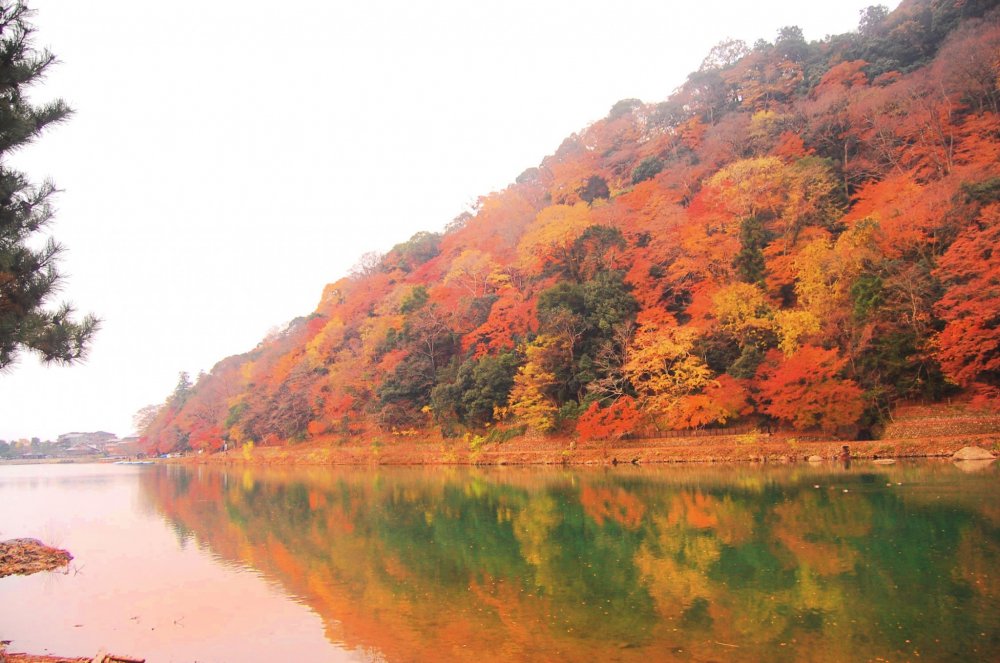
After spending the afternoon strolling around Tenryuji Temple and Saga-Toriimoto Preserved Street, make your way across the famed Togetsukyo Bridge, find a comfortable place to sit next to the Hozugawa River and let the patchwork of reds, oranges and yellows unfold around you. Or, if sitting isn’t really your thing, get moving on a 16km boat ride along the Hozugawa River for a more mobile experience.
Kyoto understandably has some of the best food in the nation, with prices and options ranging from cheap tempura to bank-breaking kaiseki meals. That being said, this writer can only recommend that you follow your nose—and budget—in Arashiyama to find a tasty spot that can satisfy both.
Read also:
The Harvest of Mimei Ogawa: the ‘Hans Christian Andersen’ of Japan
Lake Towada, Aomori
It’s hard to believe that the quiet and serene Lake Towada is a crater from after a violent volcanic eruption, but like all things in Japan, the natural elements are a part of the everyday. It is the largest crater lake on Honshū and lies in the north, between Aomori and Akita prefectures.

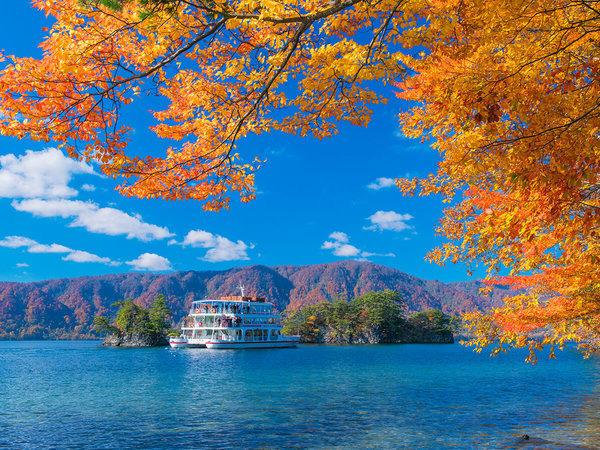
As the changing of the seasons occur quicker in Aomori than the rest of Honshu, August is Lake Towada’s most popular month. Locals and international visitors flock to its shores to experience the captivating autumn colors, as well as the lake’s mirror-like effect on a sunny day. Similarly to Arashiyama, one of the best ways to experience Lake Towada is on a 3-decker pleasure boat that circles the lake, giving you plenty of time to enjoy the deck-side views.
Naturally, the area around Lake Towada boasts an impressive selection of delicious fresh seafood. Red salmon (himemasu) and Smelt from the lake can be eaten raw, steamed or boiled to your appetite’s content.
Yuzawa, Niigata
Yuzawa is best-known for the setting of Yasunari Kawabata’s eponymous novel “Snow Country”, which is probably why it gets overlooked when it comes to autumnal splendor. Situated at the top of the Japanese Alps, Yuzawa already provides a plethora of natural beauty for visitors in winter, but perhaps the best views can be found in a few months before the temperature dips below freezing.
Like Daisetsuzan, Yuzawa’s most famous mountain, Naeba, can be seen in all of its august majesty by gondola. Hence, the Dragondola (ドラゴンドラ) is the preferred means of transportation and is Japan’s longest ropeway. During its 5,481m, you can witness not only the vibrant mountains, but also the Kiyotsu River when the Dragondola dips down, just like a dragon!

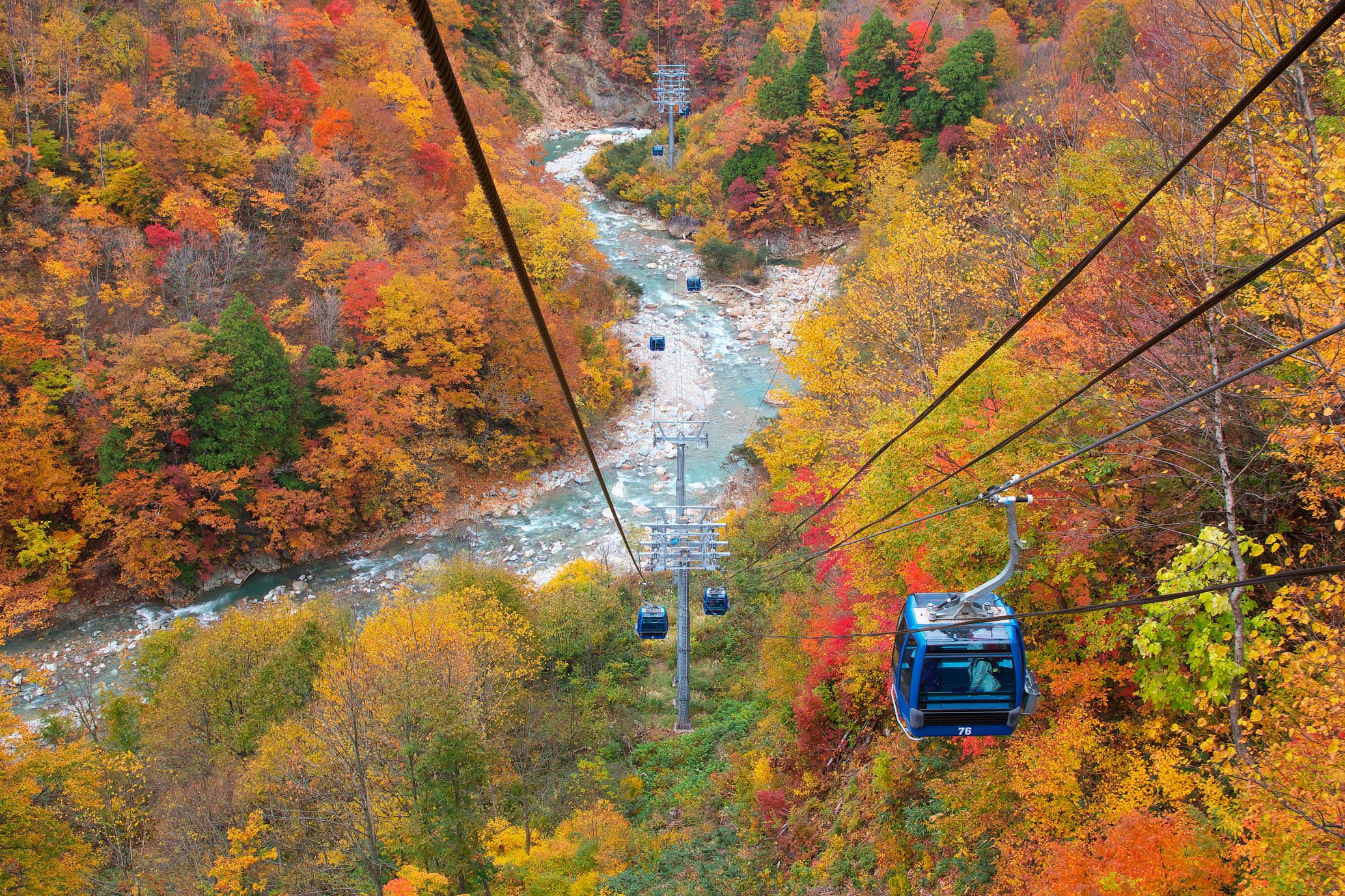
Niigata is chock-full of culinary options, but as the home of Japan’s best-selling rice, koshihikari, a warm cup of sake and steaming bowl of rice may hit the spot. Of course, if plain rice isn’t your thing, try one of the Bakudan Onigiri rice balls and fill it with whatever you’d like!
Hakone, Kanagawa
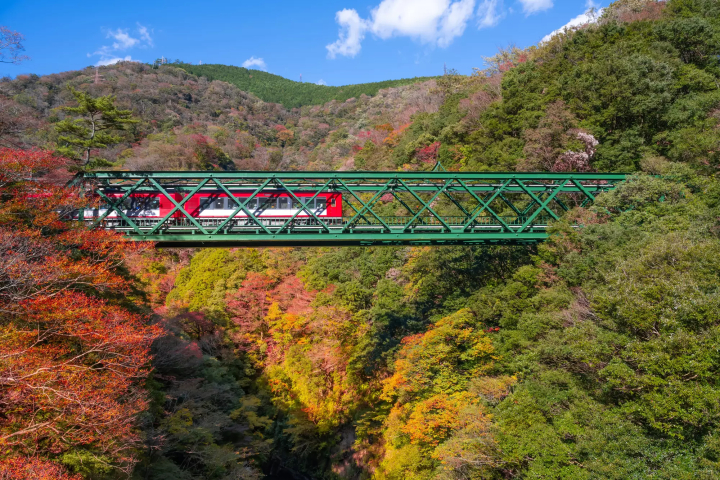
Hakone is a renowned destination for a myriad of reasons, mostly because of its accessibility from Tokyo and for its picturesque views of the iconic Mt. Fuji. However, as a town nestled within the mountains, October and November become prime months to encounter its excellent fall foliage.
There are a few ways to soak in the essence of Hakone’s lustrous autumn. For one, you could catch a ride on the 40-minute Hakone Tozan Cable Car, which takes you along a scenic route through the Hakone mountains to the Gora area, where you can see views of Mt. Myojogatake. Another would be at the Hakone Museum of Art, with its articulately sculpted gardens and painted crimson and tangerine maple trees.

The cuisine scene in Hakone is quite diverse, as diners can enjoy novelty specials like Kuro-Tamago (Black Egg), or deep-fried Wakasagi from Lake Ashi, or Hakone’s own delicacy: handmade tofu. If you happen to get out of Tokyo for the weekend, you definitely won’t be lacking in lunch options.
Japan is a great place to experience all year round, especially when it shows off its colorful palette after the summer heat. Get out of the city and enjoy your momijigari!

Josh Furr
Joshua first came to Japan with his family over 10 years ago and it completely ruined his life (in the best of ways). When he’s not trying to pass the JLPT, he’s researching Japanese history, enjoying 80s J-Pop and dreaming of 牛丼. He’s currently writing, writing, writing…mostly about Japan and video games.

